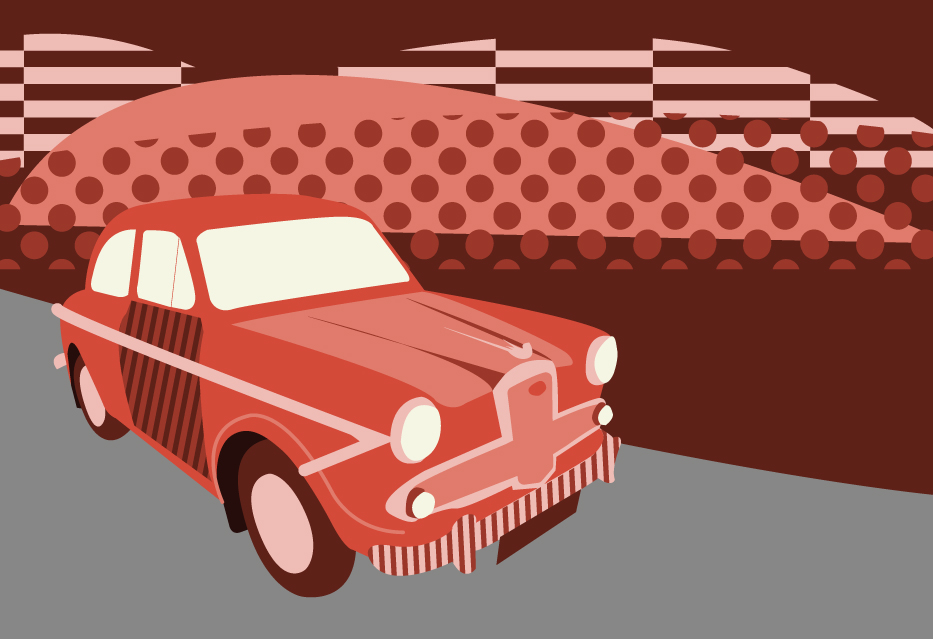The Austin Mini Metro, as it was first named, arrived exactly 40 years ago in a blizzard of patriotic fervour.
But behind the hype, it was actually a damn good car, and played a huge part in staving off disaster, for a while at least, for an embattled British Leyland.
We look back at the car’s development, and its long and successful life.
Back in 1959, Britain led the way when the Mini revolutionised the small car market.
But while its designer, Sir Alec Issigonis, had long planned an expansion of his blueprint to add some extra practicality, nothing ever came to pass.
Issigonis got as far as designing an all-new hatchback supermini, project BMC 9X, but it was axed after the completion of a single prototype, the first victim of the merger that created British Leyland in 1968.

Where the company could have stolen a march in the new ‘supermini’ sector, it fell behind as the likes of the Renault 5 and Fiat 127 forged ahead.
With the Morris Marina and Austin Allegro in full production, attention turned to finding a replacement for the ageing Mini.
Early ‘supermini’ attempts
Three projects were initially put forward to management – Ant, Dragonfly, and Ladybird, with Michelotti asked to pen a design for the latter, the largest car of the three.

It was discarded in favour of a home-made Harris Mann design, and codename ADO74 reached the semi-engineered prototype stage before it was unceremoniously culled.

BL number two John Barber balked at the £130million production costs, and thought the car had grown too large to replace the Mini.
And why replace the Mini anyway, when it was still selling in large numbers and there were more pressing priorities elsewhere?
It was only at the end of 1974 that plans for a supermini again gained traction.
BL was struggling financially, and bosses decided that joining the booming supermini market could help avert disaster.
Spen King replaced Harry Webster as head of product development, with Charles Griffin in charge of new Austin-Morris cars.
Between them, they would come up with ADO88, which ultimately became the Metro.
Project ADO88
Once again, the aim was to build a slightly larger replacement for the Mini – not as big as the Renault 5, but just as roomy.
It should not be allowed to grow too large for fear it would impact sales of the Allegro…
With BL effectively nationalised in 1975, the company sought government assurances that it would foot the bill for development of ‘the new Mini’.
Sir Don Ryder, chair of the National Enterprise Board, which managed the government’s holding in BL, provided the guarantees and ADO88 was given the green light.

To keep costs down, some parts would be carried over from the Mini, and Griffin told management the car would be ready for showrooms by the end of 1977.
Mechanically, the Mini’s A-series engine would soldier on in improved A-Plus form, but its rubber cone suspension would be swapped with the Hydragas system as seen on the Allegro, but linked side-to-side instead of front-to-rear.
The all-important styling was left to David Bache, who had won thoroughly-deserved accolades for the Rover SD1.
But the final version of ADO88 was emphatically not going to win any style awards, as feedback from disastrous customer clinics brought into stark focus.
The utilitarian car lacked the flair of its French rivals, let alone the Ford Fiesta and Vauxhall Chevette.
At last: the birth of the Metro
Harris Mann, working under Bache, was given the task of restyling the car, given a new codename of LC8.
In just five weeks, Mann and his team worked wonders, revising every external panel, resulting in a more stylish, purposeful and aerodynamic design.

It meant the car had to take a step backwards and once again go through the testing and development procedures required for, essentially, a completely new car.
Within three years, the car was ready for launch, and British Leyland was desperately in need of a boost.
There had been no new models since the Rover SD1 of 1976, and the company’s other products – the Marina, Allegro and Maxi – were seen as, at best, staid, at worst, utterly appalling.
But amid the almost constant bad press, not least the ever-present threat of industrial action, there was a groundswell of excitement about the new supermini that was on the way.
And it had to be a success, given the £275million of taxpayers’ money that had been sunk into not only developing the car but also expanding and upgrading the Longbridge factory.
On Friday, October 8, 1980, the Austin Mini Metro was finally unveiled to the public, after more than a decade of false starts, shelved projects and turmoil in the British motor industry.
But, of course, it didn’t actually replace the ever-popular Mini, but was sold alongside it.
A car to be proud of?
There was plenty of choice for the prospective buyer, with a range of trim options from Basic to HLS using either the 998cc or 1275cc A-Plus series engines.
So was this a car to finally make Britain proud? Road testers were in no doubt.

CAR magazine wrote: “At last a British car that no-one needs apologise for.”
Most rated it equal to, and arguably better than, the best-selling Fiesta, but was this just patriotic bombast? A desperation among home-based testers to give the British car industry a much-needed boost?
Autocar posed such a question in December 1980 when testing a top of the range 1.3HLS, describing “perhaps the most successful publicity crescendo in the history of British car industry”.
“Its competitors may be forgiven for suspecting that all sides of the British press have conspired to praise it, regardless of any blemishes,” it wrote.
“Even the Prime Minister has talked of the Metro in glowing superlatives, something we cannot readily recall happening before.
“As one motoring writer put it recently, it is beginning to become ‘a heresy to criticize the Metro.
Might the reality not live up to the promise?”

Keen not to praise for the sake of it, the magazine pointed out a handful of flaws: it could do with better seats, better side window demisting, illuminated heater controls, a reduction in road noise, and stronger engine mountings to reduce the ‘shunt’ effect in traffic.
But, overall, it was a “highly enjoyable and thrusting little car to drive”, an impressive load carrier, comfortably better than Japanese rivals and well up to the better European standards.
“The Fiesta, Renault 5 and VW Polo are its real rivals, and given improvement it will comfortably beat them to the top of the class,” Autocar concluded.
Sales success and industrial strife
The Metro was an instant sales success, and the car vied for supermini supremacy on the home market with the Fiesta.
A 19-year-old Lady Diana Spencer bought one of the early examples, and was regularly photographed in it by paparazzi ahead of her marriage to Prince Charles in 1981.
Advertising campaigns hailed it as “a British car to beat the world”, with a TV advert showing it repelling “foreign invaders” like the Renault and Fiat and “sending the foreigners back where they came from”. Hmm.

Production of 2,500 a week could not meet demand, and BL planned to ramp it up, but was hit by the latest in a series of industrial disputes in late 1980 – this time over seat production.
To cut a long story short, BL management was unhappy at the rate of seat production from the day shift, who claimed it was down to a lack of staff.
Bosses disagreed, and stopped the production line, causing workers to rampage through the factory, smashing windows and forcing their way into the office of the plant director.
A two-day strike ensued, during which the Mini and Allegro production lines were also halted, and when workers returned they found 6,000 seatless Metros.
A much longer strike followed in December, sparked by the sackings of eight men deemed to have caused the fracas.
Production was soon back on track in January, but more strikes followed in 1981, hitting production at a time when the Metro was flying high.
Like our illustration of the Austin Metro: British Leyland’s little saviour at the beginning of the article?
Download a free high-quality poster version here.
Metro on a high
Build quality and reliability issues – warranty claims were running at high levels – were quickly resolved and failed to dent the public’s, or road testers’, enthusiasm for the new car.
Autocar tested base model versions of the Metro and Fiesta in February 1981, and found the more aerodynamic Austin much the quicker of the two.
Tester Stuart Bladon found that the Metro had “a little more comfort, a little more pleasing appearance, and not quite so much impression that the cost cutters have been at it, plus better performance and economy”.

And in April, CAR magazine threw in the Renault 5 for good measure, concluding: “Is anyone in doubt? If so, let us spell it out. The Metro is the better car. And it is getting better all the time.”
Like the Mini before it, the Metro was fun to drive, especially in 1.3-litre form, and inherited many of the smaller car’s lively characteristics, including its unusual driving position.
It became even more fun to drive when given the warm-hatch treatment and the MG badge in May 1982, followed five months later by a turbo version developed by Lotus.
The MG octagon had been resurrected just two years after the last MGB had rolled off the production lines, and represented a return to the badge-engineering of the ‘60s and ‘70s with cars like the MG1300.

The MG Metro used an enhanced version of the A-Plus 1275cc engine, tweaked to give 73bhp, a 20 per cent improvement and enough for a brisk 0-60mh time of 10.9 seconds and a top speed of 103mph.
CAR described this “tinselled, go-faster Metro” as “a modest but remarkably effective package that transforms the car”.
The magazine judged it better than the Renault 5 TX, Fiesta XR2 and Fiat 127GT in June 1983, but behind the new Citroen Visa GT.
The turbo version cut the 0-60 time to 9.9 seconds and could hit 112mph – a true hot hatch of its day.
Motor Sport magazine’s Bill Boddy said it was “lively, jerky, hard-sprung and noisy, which is surely in the best traditions of MG sports cars?”
“Sure-footed, fast over winding roads, fun to drive,” he added. “The MG Metro Turbo is a great little fun-carriage.”
Falling behind
In 1983, the Peugeot 205 and Fiat Uno were launched, and progress in the supermini category across Europe was rapid.
The Metro, with its antiquated drivetrain, the origins of which dated back to the 1940s, started to get left behind.
Nevertheless, the buying public still bought the car in their droves, with more than 130,000 Metros bought in Britain alone in 1983, and in April 1984 it was Britain’s best-selling car.
But the Fiesta fought back in mark II guise, with a fifth gear, something the Austin still lacked.
BL gave the Metro a facelift in ‘84, with a five-door model offered and a revised interior.

In February 1985, Motor magazine pitted the Metro against the second generation Renault 5, Fiat Uno, Peugeot 205 and Vauxhall Nova, and found it wanting.
“It’s much the cheapest car of the group, but the antiquated drivetrain, turbulent ride, odd driving position, and lack of performance would rule it out for us.” Pretty bluntly put.
The fightback
The Metro was losing market share in the face of more advanced, fresher competition, but development continued, with alterations made to the suspension, plus improvements in build quality and equipment levels.
And these improvements were noticeable, as Motor showed when they drove a Metro Mayfair – a name well-known from posh Minis – in March 1986.

“We were surprised at how good as it has become,” they said, noting the tinted glass, velvet seat trim, and central locking, all for a price which undercut the equivalent 205 and Nova.
The magazine praised the “eager, torquey throttle response” from the immortal A-Series engine, and noted that the transmission was now free of driveline shunt.
“Continuous development has paid handsome dividends,” it said. “At last the Metro has become what we all hoped it would be – a thoroughly effective small car with the abilities to match its charm. It just goes to show what concentrated development and strict quality control can do.”
The A-Series couldn’t go on forever, however, and attention turned to a replacement for the Metro as the ‘80s wore on, with the in-development Rover K-series engine at the forefront of everyone’s thoughts.
The old car, hampered by the inability to fit a fifth gear to the A-Series transmission, started to fall well down the pecking order, CAR placing it ninth of 10 in a giant supermini test in April 1989.
By now, the Austin marque had been shelved and the Metro was sold without a branded badge.
In 10 years, the car had sold more than 1million.
Rover revival
Two factors played a major part in the Metro’s replacement being…a revised Metro.
Rover Group (as BL was now known) couldn’t afford to build a new car from the ground up, and former BMC suspension guru Dr Alex Moulton had made a startling discovery by playing around with the Metro’s Hydragas set up in 1987.
Swapping the suspension from side-to-side connection to front-to-rear resulted in a huge improvement on handling and ride quality.

Not only was a completely new car not affordable, but it wasn’t required – the Metro could be upgraded with new engines, revised suspension and a new set of clothes.
The A-series, which continued in the Mini up until 2000, was replaced with the all-new K-series, available in 8-valve 1113cc and 1396cc versions, and with 16 valves in early GTa and later GTi models.
It also, finally, had a five-speed gearbox.
The new bodyshell was attractive enough without being groundbreaking, and the Rover Metro was relaunched in 1990 to almost as much acclaim as its ancestor was a decade earlier.
CAR pitched a 1.1S model against a 205, Fiesta and Fiat Uno in July 1990 and gave it an almighty thumbs up.
“The Metro 1.1S is neither as fast nor as spacious as the 205, but it is better-finished and a treat to drive, in town or country,” it wrote.
“How can the car with the smoothest ride, quietest powertrain, sharpest handling, best roadholding and firmest brakes fail to take the title? The new Metro wins by an emphatic margin.”
The GTi was similarly impressive, Autocar putting it firmly at the top of the small car class and describing it as “a staggering improvement over the old MG Metros”.

The Rover Metro won the What Car? car of the year award in 1991, and was further updated and renamed the Rover 100 – already its name for export markets – in 1994.
MG Metro 6R4
We can’t end the Metro story without mentioning the incredible 6R4 rally car, developed in conjunction with the Williams F1 team for the short-lived Group B rallying class.

Although it was identifiable as a Metro, its resemblance to the production car was only skin deep, power provided by a normally aspirated 3-litre V6 based loosely on the Rover V8.
Mounted amidships, in international rally guise it produced 410bhp, watered down to 250bhp for the clubman version sold to the public for homologation purposes.
For £40,000, you could pop along to Cowley and buy one of these baby supercars, capable of hitting 60mph in 4.8 seconds – the same as a Lamborghini Countach.

Tony Pond steered the car to a creditable third place in the Group B 1985 Lombard RAC Rally behind a pair of Lancia Delta S4s.
That early success was not repeated, engine reliability issues preventing any course completions the following year before Group B was permanently banned mid-season because of a series of horrific fatal accidents.
Austin Rover withdrew from the rallying scene, but privately-owned 6R4s continue to compete, with certain restrictions.






